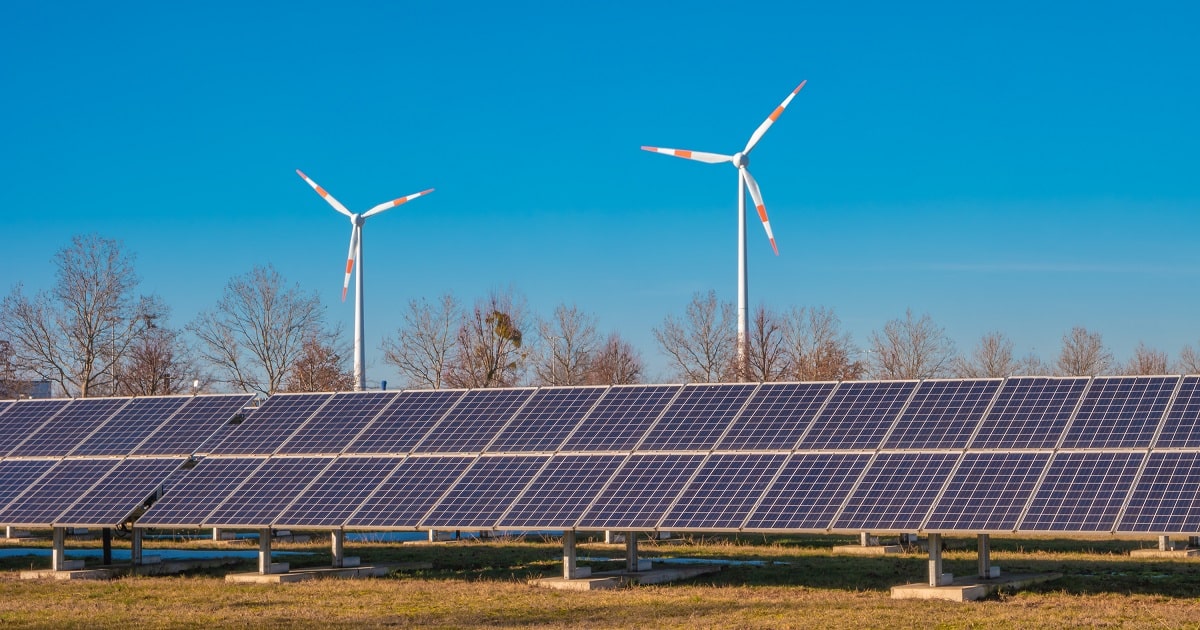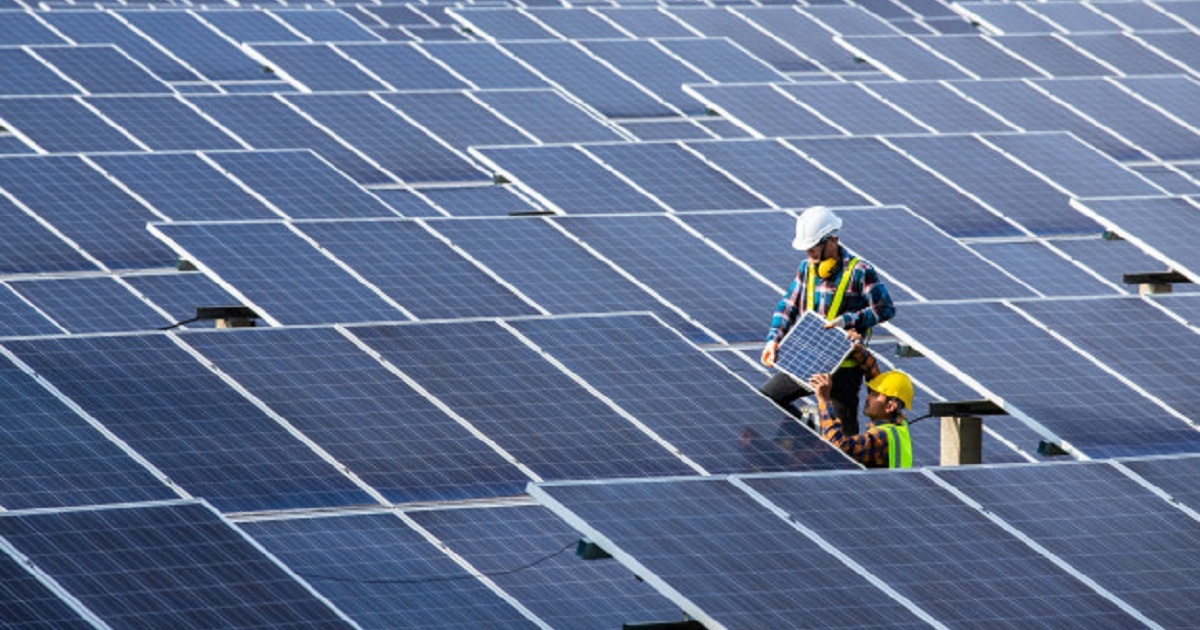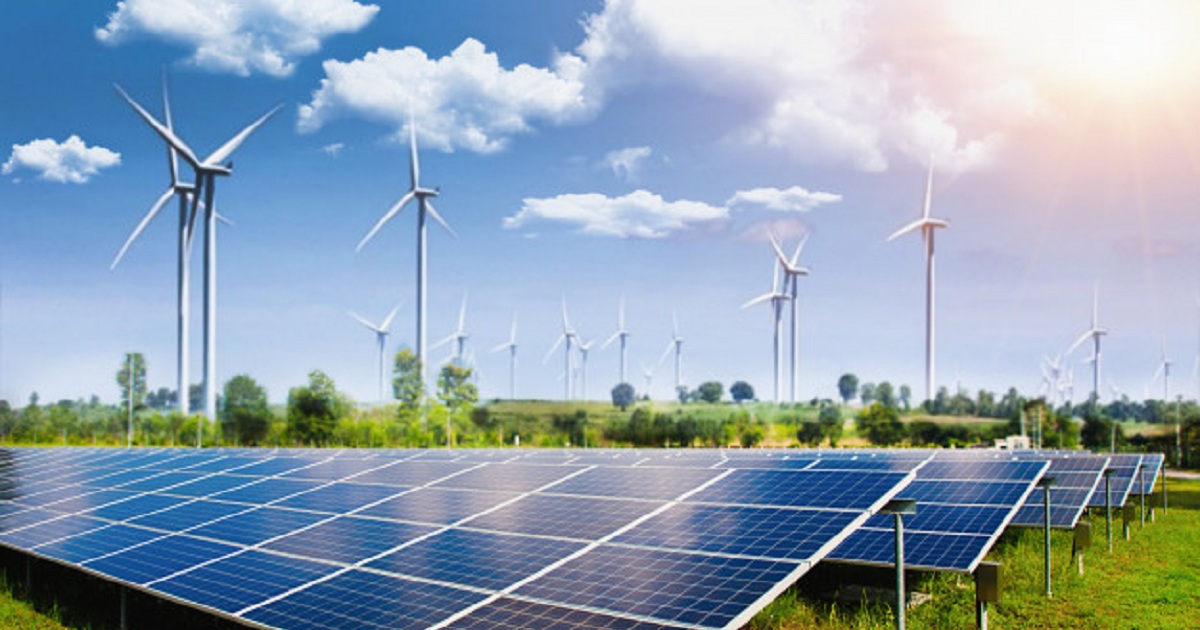
Solar+Storage, Strategy and Best Practices
Article | September 17, 2022
Cleaner energy resources are the dire need of the hour and this is a known fact. While scientists and experts across the planet are striving hard to reduce our reliance on fossil fuels, our energy needs have never faced a downfall- thanks to rapid industrialization and urbanization. Although renewable resources like solar, wind, and hydro-electric power are the most popular alternatives, these are seasonal energy sources and the energy production from the same will not be similar all around the year. The fluctuations in production hence cannot always meet the energy demand of the population, and this makes the renewable energy sources not completely reliable.
Solar Production v/s Demand of the same in a year
What and How H2 is produced?
Now, this is where Hydrogen- the first element of the periodic table comes to the spotlight with a solution. Being a gas, hydrogen fuel can very well cater to our energy needs and is produced from techniques including Thermochemical, Solar-Water splitting, electrolytic and biological processes. While the production of this cleaner energy source leaves a carbon footprint of about 830 million tonnes in the form of CO2 annually, the result being a zero-emission fuel is what makes H2’s future bright.
Storage of H2 – the million-dollar question:
Having almost cleared the need and methods of producing hydrogen fuel, we will be looking at an area that is usually not given much thought about and that is the storage of H2. As already mentioned, for time being let us consider hydrogen as an alternative to renewable resources which is utilized when the energy demand increases drastically. While producing the fuel in the nick of time is obviously undoable, sufficient storage of H2 anticipating the demand is the best choice. Like Natural Gas, Hydrogen is also compressed before storing to achieve lower volume and also because liquid hydrogen demands a 64% higher amount of energy for storage than its compressed gaseous counterpart.
Storage tanks v/s Geological landforms:
Compressed Hydrogen can be stored in surface storage vessels (like steel composite concrete vessels and in wind turbine towers) or in geological landforms like (salt caverns, depleted O&G reservoirs, and aquifers). Nevertheless, unlike the underground geological landforms which offer huge storage capacity owing to their sheer scale, the storage tanks which can range in size from a small bottle to a huge tank require high amounts of pressure to store an appreciable amount of H2 in it. Since these storage tanks are usually constructed on the surface, the pressure conditions in these tanks need to be artificially stimulated and thereby mount huge upfront costs when compared to their geological storage counterpart.
H2 storage prices in Geological Landforms v/s Storage Vessels (in $/kg)
The above is a table comparing the prices of Hydrogen storage in Geological landforms and Storage Vessels at different pressure conditions. It is visible from the table that it's about 218 times cheaper to store the same amount of hydrogen in Geological landforms than in storage vessels.
Is geological storage truly a better option?
Like any other storage option geological storage too has its pros and cons. From the erosion of pipelines to the tedious task of injecting the gas and maintaining it at apt pressure conditions, geological storage has its limitations. However, the important prerequisite is the availability of the suitable landform itself.
While most of the Depleted O&G Reservoirs have already met all the requirements for a suitable Underground Hydrogen Storage (UHS) system, the presence of unrecoverable remnant fluids in it makes it both a boon and a bane. This is because the presence of remnant fluids like oil and gas satisfies the cushion gas need for efficient storage of H2 in the reservoir, chances of contamination of H2 by the same is also high. This is the reason why Aquifers too aren’t favorable underground landforms when it comes to hydrogen storage.
Salt Caverns- the best UHS System?
The problem of Hydrogen contamination in Depleted Oil & Gas reservoirs and aquifers leaves us to the next big suitable subsurface landform- salt caverns. Unlike the other two landforms, the problem of contamination can be prevented in these dome-like structures formed due to the upliftment of salt deposits and it is also found that about 98% of its storage efficiency can be used to store Hydrogen here. The reason behind its relatively expensive nature when compared to its other two counterparts is due to the process of salt removing or leaching that must be done before storing to ensure that the contamination of the gas is unheard of at least here.
Suitable Conditions of UHS:
As per Stefan Iglauer, the maximum amount of H2 can be stored at a depth of 1100m beneath the Earth’s surface and the capacity gradually decreases up until 3700 m depth beyond which the wettability of the gas increases as it percolates through the rocks and hence cannot be permanently immobilized. Conclusively it is found that suitable landforms formed at 1km depth can store up to 2.0 Mt of H2. Comparing this 2 MT storage capacity of Salt Caverns with the currently available storage tanks which can store about 800 kg of H2 in it, it is visible that geological landforms have a clear upper hand at least when it comes to storage capacity.
Future of UHS:
With demands for Hydrogen fuel estimated to grow at 5.48 % annually and the need for a suitable storage system of the same at 5.8% annually, the field of Underground Hydrogen Storage systems indeed has a bright scope. Moreover, to meet the large-scale needs of Industries, there is an imminent need to level up the storage capacity of H2 and by exploring suitable geological landforms across the globe, the estimated industrial need of 1200 kT/ year in 2050 can be met.
Read More

Energy
Article | July 16, 2022
Every year, large corporations spend millions, if not billions, of dollars on energy—and millions more on supply chain, outsourcing, and logistical expenditures. Outside of the most energy-intensive sectors, however, the majority of businesses regard energy as just a cost to be managed. This is a strategic error that misses out on the significant potential to decrease risk, boost resilience, and generate new value.
Today, energy is moving up the corporate agenda as a result of broad environmental, social, and economic developments, such as climate change and global carbon regulation, growing demands on natural resources, increased standards for corporate environmental performance, advances in energy technology and business models, and dropping costs for renewable energy sources. These major trends alter the environment in which businesses operate, exposing them to new risks and value-generating opportunities.
PWC surveyed major commercial and industrial enterprises based in the United States and discovered that 72% are actively exploring new renewable energy acquisitions in order to decrease emissions (85%), produce an attractive ROI (76%), and mitigate the risks related to energy price volatility (59%).
Corporate energy is a focus. Organizations in all sectors—and particularly those with large energy footprints—are encouraged to implement a C-suite strategy for energy management developed around the key points mentioned below.
Make Energy Management a C-Suite Priority.
If energy is to get the attention it requires in order to have an effect, its significance must be conveyed from the top down. This will require the CEO to designate energy management as one of the company's top objectives and delegate strategy development and implementation to the COO, CFO, or other executives.
Embrace Renewable Energy Technologies
Technology advancements, coupled with government incentives, have driven down the cost of sustainable energy. LED lighting, solar energy, wind energy, and the batteries that enable intermittent renewables, for example, have all come down in price in recent years, making these technologies more economical than before. This is significant since alternative energy solutions can provide enormous advantages to businesses, such as preparing them for future requirements, enabling them to continue operations in the case of a power loss, and strengthening their image as an environmentally conscientious brand (for CRE, this. As a result, every business energy management plan should contain a directive to adopt renewable and alternative energies at every opportunity.
Strategize Using Risk and Opportunity
The risk and opportunity factors connected to its sourcing and consumption should serve as the foundation for the company's energy management strategy. This calls for a comprehensive grasp of the company's present energy costs and the potential benefits of change. Therefore, while creating an energy management plan, businesses should think about how they can:
Calculate and cut down on variable energy bills.
Energy costs should be adjusted to improve the value and reduce expenses.
Increase the amount of renewable energy they utilize.
Reduce their carbon footprint.
Select suppliers that exhibit a dedication to eco-friendly operations.
Integrate energy strategy into the organization's goals and daily activities.
Make a public strategy to achieve strict emission and energy use goals.
Closing Lines
Competitive edge drivers are constantly evolving. Not a long time ago, "quality" was a fringe philosophy, and IT was just a cost center. Quality is no longer optional, and understanding big data is essential. Energy is taking a similar path. What was previously buried deep inside procurement is now emerging to take its position among the fundamental drivers of corporate success.
Read More

Strategy and Best Practices
Article | July 8, 2022
We’ve talked a bit about the functioning of solar panels, the mechanisms behind them, and the best panels suited for the average Indian household. Check them out for the starters. For this article, we’re detailing a complete guide to the components and installation of a solar system.
Solar panels are all but a part of the complete setup of a functioning solar system. It is the basic building block of the system, but there’s more to it than just a silicon wafer panel. The other necessary components include Solar Inverters, Batteries (in a select type of system) and Panel Structure/Stands, and other accessories.
Read More

Energy
Article | April 20, 2021
Energy is an important feature in the economic and political development of a country. In developed nations like the USA, energy expansion has now reached a point where renewable energy sources also play a large part in the production of electricity.
To meet the energy demands of the country, most production of renewable energy comes from fossil fuels and other non-renewable energy sources.
Around 25% of the world’s energy is generated with renewable energy resources- mainly solar, wind, hydropower, and in some cases, geothermal. It is one of the fastest-growing electricity sources.
Renewable energy is collected from resources that are abundantly available in the environment, like the sun or wind. There has been a growing interest in renewable energy production as fossil fuels are depleting. In most parts of the world, renewable energy has become a primary source of energy production.
Renewable energy is preferred as they produce fewer greenhouse gases than non-RE sources. There are several other advantages to renewable sources like lower carbon emissions, reduced air pollution, and other socioeconomic benefits.
However, unlike non-RE sources, there are challenges in renewable energy like economic, political and regulatory barriers, structural, social, and technical challenges which require advancement in technology, and a heavy investment with a proper understanding of obstacles it faces. Some obstacles are due to technology associated with renewable energy, whereas others are because of policies, marketplace, regulations, and infrastructure.
Impact of Covid-19
The Covid-19 pandemic has brought the world to a grinding halt. It has severely impacted individuals and businesses alike, with many of the latter being closed down permanently. Similarly, the pandemic has also impacted the expansion of clean energy systems by forcefully curbing any investments.
The technology and adoption of renewables have been making uneven but sure progress. The global pandemic has slowed down this development. According to International Energy Agency, the global share of electricity supply from renewables had reached 28% in 2020 from 26% in 2019, but the growth is expected to slow down further. The total energy supply is set to reduce by 13% from 2019. This substantial decline can be attributed to supply chain disruptions, lockdown, and emerging financial problems. Transport biofuel production and renewable heat consumption are projected to decline due to lower industrial activity.
Governments have an opportunity to promote and accelerate the use of clean energy by incentivizing building, technology, and infrastructure across the country. This would be crucial to rebuilding the economy, create jobs, and build efficiency.
Capital Costs and Investment
The most obvious challenge of widespread adoption of renewables is cost, predominantly infrastructure costs like building and installing solar and wind power plants. Although it is quite cheap to operate and maintain solar and wind power plants, installation becomes more and more expensive.
Over the last few years, even though the prices of installation of solar panels has fallen significantly, it remains higher than non-renewables. On average, a 2-kilowatt solar panel system costs $4,159 after tax credits, whereas the capital cost of a gas-fired power plant would cost lesser than that.
In the last two years, investment in renewables has increased, but that is only because the investments in fossil fuels have been rapidly falling. Clean energy investments still fall short of what is necessary to convert into a more sustainable future. To ensure continuous investment in sustainable energy, policymakers have to focus on short investment turnaround, focus on rapid environmental gains favoring cleaner energy generation.
Power on demand
One of the most significant challenges of renewables is the ability to provide power on demand. In the case of solar power, you only get energy during the day and only when it is sunny. As for wind energy, power is generated only when it is windy. There is an intermittent generation of power in renewables which wouldn’t be a problem if there were appropriate energy storage solutions. The biggest test in providing power on demand is storage. Even if homes, businesses, or states install wind energy systems or solar panels, storing the generated energy is still an unsolved issue.
Opponents of renewable energy highlight the reliability factor on solar and wind to augment support for coal, gas, and nuclear plants, which provide baseload power. This argument is used by lobbyists to drive out investment into renewables, thus becoming a barrier to widespread adoption of wind and solar energy.
Location challenges
Renewable energy plants have grids that require a large area of land. It can be unappealing to customers to switch to renewable energy sources as it is conditional depending on the size of the land. Not all states and regions are apt to build solar panels or have wind turbines as they are dependent on the geographical location. For example, building solar panels in California makes more sense than building them in New York as the former has an abundant supply of both sun and land.
Renewables operates on what is known as a decentralized model. In a decentralized power plant, small generating stations are spread across a larger area that works collectively to deliver power. In the case of coal, nuclear power, or natural gas, they are highly centralized and depend on fewer high output power plants.
Siting
Decentralized systems prove to be a problem for siting and transmission of energy created by solar or wind. Siting is needed to move blades or solar panels to large pieces of land. To do so requires to draw up contracts, negotiate, acquire permits, or build community relations; all of this can delay or kill a renewable project even before it begins.
Businesses can incur additional charges due to demand and delivery which seems like a significant challenge for them. Utility services apply these charges to recover costs of purchasing energy and maintaining power lines and energy lost in the transmission system. Moving power sources closer to your business will help you avoid such preventable expenses.
Transmission
The next challenge to overcome in renewables is the transmission of generated electricity. Transmission means the transfer of electricity from where it is generated to where it is consumed. Most transmitters that exist in this day and age are built for coal and other fossil fuels and not renewables. To make things easier for transmission of clean energy, there needs to be a significant infrastructure and technological development, which cost a lot of money.
Making the economics work with financing and siting can prove costly for developers and customers alike.
Policies and Regulations
Unfortunately, the fossil fuel industry is backed by multi-billionaires who wield a considerable amount of political influence. This severely affects the chances of expansion for the renewable industry. Industry experts estimate that the USA spends upwards of $60 billion on subsidies for fossil fuels every year. The taxpayers have helped fund the industry’s research and development, drilling, mining, and generation of electricity. Renewables like wind and solar enjoy much lesser subsidies and political backing. The fossil fuel industry has used its enormous power to spread misinformation about climate change.
To increase public interest and investment in renewables, there need to be clear and concise legal procedures and regulatory policies. Having proper regulations in place creates a stable environment for investment and overcome hurdles and can anticipate the revenue streams. Large-scale renewable energy projects require a large amount of capital which is hindered by the failure of proper policies that fail to attract private players.
Frequently Asked Questions
What is a major challenge with using more renewable energy?
Renewable energy is competing with fossil fuels and nuclear technology. Other major challenges include underdeveloped infrastructure and lack of economies of scale.
What are the benefits of using renewable energy?
Some benefits of using renewable energy are lower energy costs, reduction of emissions, massive positive impact on environment, and marketing opportunities for businesses.
Is renewable energy cheaper than fossil fuels?
Fossil fuels are subsidized which makes it cheaper at the beginning. However, renewables get cheaper to maintain over the years hence making it cheaper than fossil fuels.
What is the cheapest source of renewable energy?
Solar PV and on site wind are the cheapest sources of renewable energy sources.
{
"@context": "https://schema.org",
"@type": "FAQPage",
"mainEntity": [{
"@type": "Question",
"name": "What is a major challenge with using more renewable energy?",
"acceptedAnswer": {
"@type": "Answer",
"text": "Renewable energy is competing with fossil fuels and nuclear technology. Other major challenges include underdeveloped infrastructure and lack of economies of scale."
}
},{
"@type": "Question",
"name": "What are the benefits of using renewable energy?",
"acceptedAnswer": {
"@type": "Answer",
"text": "Some benefits of using renewable energy are lower energy costs, reduction of emissions, massive positive impact on environment, and marketing opportunities for businesses."
}
},{
"@type": "Question",
"name": "Is renewable energy cheaper than fossil fuels?",
"acceptedAnswer": {
"@type": "Answer",
"text": "Fossil fuels are subsidized which makes it cheaper at the beginning. However, renewables get cheaper to maintain over the years hence making it cheaper than fossil fuels."
}
}]
}
Read More